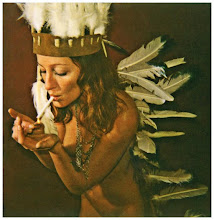
One-sided female nudity has been depicted in art, particularly in the Orientalist paintings of the 19th-century. A typical scene would often contain depictions of white slavery in which one or several nude females would be displayed before an audience of men as part of a slave auction. The archetypal example of this type of scene is Jean-Léon Gérôme's The Slave Market 1884, in which a nude female slave is examined by a potential buyer. (LEFT)

The painting initially created controversy when it was first displayed, because the nude female was shown facing her rescuer, a posture which was considered too sexually suggestive for European audiences. John Everett Millais repainted the figure so that she was looking away from her rescuer.
Édouard Manet's Le déjeuner sur l'herbe ("The Luncheon on the Grass"), in which a nude woman is depicted having lunch with two fully clothed men, is another famous painting whose themes were controversial when it was first displayed in 1863.
_1863(1).jpg)
This reaction of shock by 19th-century audiences highlights the potential of CMNF as a mechanism for both challenging and reinforcing gender stereotypes.



No comments:
Post a Comment